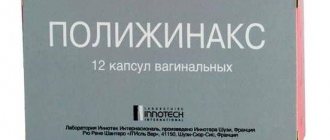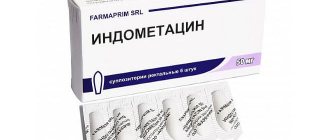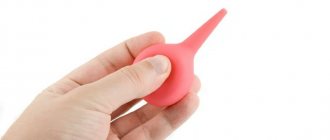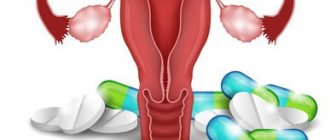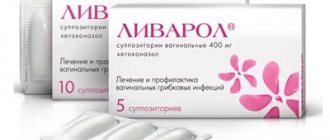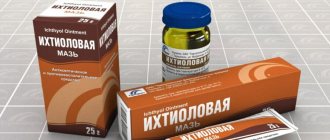Release form Trichopolum and its analogues
Trichopolum is produced in various dosage forms.
The drug is used orally and topically, having a dual effect on pathogens - from the inside and outside. White tablets with a slight yellowish tint are the main form of the medicine, but there are also others:
- gel and cream for topical use;
- vaginal suppositories and tablets;
- powder for the manufacture of medicinal solutions used for intravenous injections.
Analogs of the drug Trichopolum produced by the pharmaceutical industry are as follows:
- Medazol;
- Orvagil;
- Camesol;
- Flagyl;
- Rosamet;
- Trichazol;
- Metroxan;
- Arilyn;
- Nidazole;
- Klion;
- Zoacid;
- Metroxan.
All of these drugs contain metronidazole as an active substance.
Reviews
Alexandra, 27 years old, Nizhny Novgorod
“Only Trichopolum helped with inflammation of the appendages. I had tried several medications before, but none of them turned out to be as effective. But I don’t recommend taking it yourself; it’s better to consult a doctor first.”
Irina, 19 years old, Moscow
“The gynecologist prescribed Trichopolum for inflammation. It helped quickly and effectively, despite minor side effects.”
Olesya, 24 years old, Kazan
“I cured the inflammation of the appendages with Trichopolum, but I was worried about the side effects - an allergy appeared. Next time, if necessary, I’ll ask the doctor to prescribe something else.”
Standard treatment regimens
For the purpose of prevention, a few days before the diagnostic and treatment procedure, you need to start taking tablets according to the standard method (3 tablets per day at regular intervals).
Acute adnexitis in a hospital is treated with daily Metrogyl droppers. For other types of inflammation in the uterine appendages, tablet medication is used (1 tablet three times a day), lasting at least 10 days. Vaginal therapy involves the daily administration of a suppository or gel, which should be used for 10-14 days.
The prophylactic or therapeutic use of Metronidazole against the background of acute or chronic forms of salpingoophoritis helps to cope with inflammation in a short period of time and with minimal risk of complications.
The positive effect of therapy occurs if the dosage and duration of treatment prescribed by a specialist are observed. You should remember about possible side effects and contraindications: it is better not to use the drug without consulting your doctor.
Pharmacological action and pharmacokinetics
The active substance of Trichopolum - metronidazole - is a derivative of 5-nitroimidazole, which has an antibacterial as well as antiprotozoal effect. It has a detrimental effect on aerobic and anaerobic bacteria and protists, damages their DNA, stopping the production of nucleic acids in them. Trichomonas, Fusobacteria, Gardnerella, Amoeba, Giardia, Clostridia, Balantidia are susceptible to metronidazole.
The drug quickly enters the blood from the stomach, is evenly distributed throughout the body and penetrates through the bloodstream into all organs and tissues:
- skin;
- saliva;
- sperm;
- bile;
- liver;
- brain;
- vaginal secretion;
- cerebrospinal fluid;
- kidneys;
- lungs.
In them, the concentration of the active substance reaches its maximum value after 1.5-3 hours (depending on the dose of the medicine taken). Food in the stomach reduces the rate of penetration of metronidazole into the bloodstream. The liver is largely responsible for drug metabolism, where 30-60% of the drug is converted. The resulting metabolites have the same medicinal effect as the main substance. Their half-life is 6-8 hours, and in severe liver diseases it can increase. The drug is excreted by the kidneys (up to 80%) and through the intestines (up to 15%).
How to drink trichopolum for inflammation in women
If a patient is diagnosed with gardnerellosis, treatment with drugs is prescribed only if at the moment the woman (namely, they most often suffer from this disease) is not pregnant.
The reason is not that drugs for gardnerellosis have a large number of side effects that are undesirable during this period of a woman’s life, but that this disease does not pose a particular danger either to the patient herself or to the life of the fetus or its development.
Therefore, it will be possible to prescribe tablets for Gardnerella already when the child is born.
Description
The drug in question has high antibacterial activity and is antiprotozoal. It is a derivative of 5-nitromidazole. Available in the form of white tablets with a yellowish tint. Those who have infections of a bacterial nature need to undergo a course of treatment with Trichopolum. This drug has a wide spectrum of action and an increased level of bioavailability.
Trichopolum does have side effects, but you must follow the instructions and dosage regimen to minimize them.
The medicine stops the process of inflammation in the pancreas, and if it is taken with other medications, it is most effective.
Where to buy and how much does Trichopolum cost?
This medicine is considered a prescription drug but is often available over the counter. The average price of tablets varies between 70-90 rubles, the cost of candles ranges from 240 to 400 rubles.
Trichopolum solution for infusions (intravenous injections) is sold only by prescription, is rarely found in online pharmacies, and costs approximately 100-120 rubles.
When choosing a medicine online, check the delivery cost.
| Name | Manufacturer, volume | price, rub. | Salesman | Address |
| "Trichopol", vaginal tablets | Poland (Polpharma) 500 mg, 10 pcs. | 264 | ePharmacy | eapteka.ru |
| 247 | Dobraya Pharmacy on Akademicheskaya | Moscow, Vinokurova, 5/6, building 3 | ||
| 248 | Planet Health | Moscow, 2nd Vladimirskaya, 38 | ||
| 274 | Piluli (online pharmacy) | piluli.ru | ||
| 293,3 | Evalar | Moscow, Kaluzhskaya square, 1/k.1 | ||
| 246,4 | Apteka | apteka.ru | ||
| "Trichopol", tablets | Poland (Polpharma) 250 mg, 20 pcs. | 81 | ePharmacy | eapteka.ru |
| 66 | Marko's Pharmacy on Open Highway | Moscow, Otkrytoe shosse, 21/k.4 | ||
| 82,7 | Planet Health | Moscow, Nakhimovsky prospect, 40 | ||
| 75,34 | Samson-Pharma | Moscow, Frunzenskaya embankment, 36/2 | ||
| 80,7 | Apteka | apteka.ru | ||
| 84 | Piluli | piluli.ru | ||
| "Trichopol", solution for intravenous injection | Poland(Polpharma)0.5% 100 ml | 115,42 | Samson-Pharma | Moscow, Nikolskaya, 17/str.1 |
| 115 | Pharmacy IFC Dmitrovskaya | Moscow, Dmitrovskoe highway, 98 | ||
| 100 | Neopharm | Moscow, st. Dekabristov, 20/ |
The price of Trichopolum in the form of suppositories in most pharmacies ranges from 200 to 330 rubles. Analogues of the drug are cheaper.
The drug has antibacterial activity. It helps in the treatment of many diseases caused by various types of bacteria, obligate anaerobes, and gram-positive microorganisms. It is important to know! The tablets have the ability to increase exposure to radiation during the treatment of malignant neoplasms.
The tablets have a pale yellow tint. A distinctive feature is the risk, flat round shape, and the manifestation of brightness of color when exposed to light. The tablets are packaged in special blisters; one pack contains 10 pieces.
Trichopolum is produced not only in tablet form. Over time, the need arose to sell the drug for topical use, which has a beneficial effect in the treatment of gynecological, urological and dermatological diseases. Today you can buy Metronidazole in the pharmacy in the form of suppositories and ointments.
The average cost of the drug depends on the form of release and is:
- tablets – 60-90 rubles;
- candles – 260-350 rubles;
- ointment - 200-260 rubles.
Indications
What is Trichopolum prescribed for? The main cause is infectious and inflammatory diseases that are caused by microorganisms sensitive to the drug.
- Bacterial vaginosis.
- Trichomoniasis.
- Amoebiasis.
- Giardiasis.
- Ulcerative gingivitis, odontogenic infections.
"Trichopol" is prescribed for anaerobic bacterial infections, gynecological, abluminal, sepsis, bacteremia, infections of joints and bones, soft tissues, skin, respiratory tract infections.
Trichopolum is also used to treat Helicobacter pylori for stomach and duodenal ulcers. The drug is used for prophylaxis before surgeries on the genitals and gastrointestinal tract.
“Trichopol” is especially effective for bacterial vaginosis, giardiasis, trichomoniasis, and anaerobic infections.
In the case of pancreatitis, Trichopolum is used to eliminate the bacterium Helicobacter pylori, which infects the stomach area, damages the mucous membrane, and causes various inflammatory processes.
As a result of such damage, gastrointestinal diseases such as gastritis and ulcers can occur.
Trichopolum is often prescribed after operations performed on the gastrointestinal tract, as this prevents the formation of complications.
In what cases should women consult a gynecologist? Since Trichopolum is used to treat sexually transmitted infections, in case of burning, itching in the vagina, purulent discharge, nagging pain in the lower abdomen and other unpleasant symptoms, you should visit a specialist. Trichomoniasis and vaginitis can cause serious consequences, including infertility. During treatment with Trichopolum, sexual rest should be observed. Both partners usually undergo therapy. After treatment, sexual intercourse should be protected.
Source: https://stoma22.ru/nasekomye/geksikon-i-trihopol.html
Pharmacological action of trichopolum
The pharmacological action of Trichopolum is antimicrobial, antibacterial, antiprotozoal, trichomonacid, antiulcer, antialcohol.
The nitro group of the metronidazole molecule, which is an electron acceptor, is integrated into the respiratory chain of protozoa and anaerobes (competes with electron transporting proteins - flavoproteins, etc.), which disrupts the respiratory processes and causes cell death. In addition, in some species of anaerobes it has the ability to suppress DNA synthesis and cause its degradation.
After oral administration, Trichopolum is quickly and completely absorbed from the gastrointestinal tract (bioavailability of at least 80%). Cmax is reached within 1–3 hours and ranges from 6 to 40 mcg/ml, depending on the dose. Plasma protein binding is insignificant - 10–20%.
About 30-60% of trichopolum is metabolized in the body by hydroxylation, side chain oxidation and conjugation with glucuronic acid to form inactive and active (2-oxymetronidazole) metabolites. The main metabolite also has antiprotozoal and antimicrobial effects.
T1/2 with normal liver function - 8 hours (from 6 to 12 hours), with alcoholic liver damage - 18 hours (10-29 hours), in newborns born at a gestational age of 28-30 weeks - approximately 75 hours; 32–35 weeks - 35 hours; 36-40 weeks - 25 hours. 60-80% of the dose taken is excreted by the kidneys (20% unchanged) and through the intestines (6-15%). Renal clearance is 10.2 ml/min.
In patients with impaired renal function, after repeated administration, accumulation of trichopolum in the blood serum may be observed (therefore, in patients with severe renal failure, the frequency of dosing should be reduced). Trichopolum and the main metabolites are quickly removed from the blood during hemodialysis (T1/2 is reduced to 2.6 hours). During peritoneal dialysis, it is excreted by the kidneys in small quantities.
Trichopolum is active against Trichomonas vaginalis, Entamoeba histolytica, Gardnerella vaginalis, Giardia intestinalis, Lamblia spp.; anaerobic gram-negative microorganisms: Bacteroides spp. (including B. fragilis, B. distasonis, B. ovatus, B. thetaiotaomicron, B.
vulgatus), Fusobacterium spp., Veillonella spp., Prevotella (P. bivia, P. buccae, P. disiens); anaerobic gram-positive rods: Clostridium spp., Eubacterium spp.; anaerobic gram-positive cocci: Peptococcus spp., Peptostreptococcus spp.
Trichomonacid effect (death of 99% of the above protozoa) is observed at a drug concentration of 2.5 μg/ml for 24 hours. For anaerobic microorganisms, the MIC90 is 8 μg/ml.
In combination with amoxicillin, it is active against Helicobacter pylori (amoxicillin suppresses the development of resistance to trichopolum).
When Trichopolum is prescribed to people suffering from chronic alcoholism, it creates an aversion to alcohol in them (causes Antabuse-like syndrome).
What do Trichopolum tablets help with?
Due to the fact that the range of uses of this pharmaceutical drug is quite wide, doctors prescribe it for the following conditions:
- in the presence of a disease such as trichomoniasis - inflammation of the human genitourinary organs caused by trichomonas;
- in case of detection of diseases such as amoebic liver abscess, amebiasis and giardiasis;
- for infections caused by anaerobic bacteria, which may occur due to postoperative complications, pneumonia, abscesses of the lung, brain, liver and abdominal cavity, meningitis, bone and skin infections;
- to prevent the development of complications during various surgical interventions, gynecological operations, etc.;
- when identifying mixed bacterial infections;
- for the treatment of gastric or duodenal ulcers.
Source: https://za-dolgoletie.ru/info/kak-pit-trihopol-pri-vospalenii-po-zhenski/
Contraindications
I have been detecting and treating parasites for many years. I can say with confidence that almost everyone is infected with parasites. It's just that most of them are extremely difficult to detect. They can be anywhere - in the blood, intestines, lungs, heart, brain. Parasites literally devour you from the inside, at the same time poisoning your body. As a result, numerous health problems appear, shortening life by 15-25 years.
The main mistake is delaying! The sooner you start removing parasites, the better. If we talk about medications, then everything is problematic. Today there is only one truly effective anti-parasitic complex, this is Toximin. It destroys and sweeps out all known parasites from the body - from the brain and heart to the liver and intestines. None of the drugs existing today is capable of this.
Within the framework of the Federal program, when submitting an application before October 12. (inclusive) every resident of the Russian Federation and the CIS can receive one package of Toximin for FREE!
Before starting treatment with Trichopolum, it is necessary to study the annotation to make sure there are no contraindications.
The main restrictions for taking Trichopolum:
- severe pathologies of the kidneys and liver;
- leukopenia, diseases of the hematopoietic system;
- disturbances in the functioning of the central nervous system;
- ataxia;
- asthma;
- eczema;
- tumors, some brain diseases;
- hypersensitivity, intolerance to the components of the drug.
How to take Trichopolum tablets
The dose and regimen of medication depends on the type of female disease. For example:
- For ureaplasmosis, chlamydia and trichoplasmosis, the drug is taken orally after meals, 2 tablets. in the mornings and evenings or 3 times a day, 1 tablet. during the week.
- For cystitis, urethritis and endometriosis, Trichopolum tablets are taken in the same doses, but for 10 days in a row.
- Thrush and vaginitis are treated for 5-10 days, taking 2 tablets. 2 times every day.
This is a standard regimen for the use of this drug for gynecological diseases, which, however, may vary depending on the development of the disease, age, general condition of the sick woman and her individual response to the treatment. The decision to change the treatment regimen is made by the patient’s attending physician.
Trichopolum (250 mg)
One tablet contains
active substance – metronidazole 250 mg,
excipients: potato starch, gelatin, glucose solution, magnesium stearate.
Description
The tablets are white with a yellowish tint, turn yellow when exposed to light, round, flat on both sides and scored on one side.
Pharmacotherapeutic group
Antimicrobials for systemic use. Imidazole derivatives. Metronidazole.
ATX code J01XD01.
Pharmacological properties
Pharmacokinetics
Suction
Metronidazole is easily absorbed from the gastrointestinal tract (min. 80%). Only small amounts are absorbed after intravaginal administration.
After taking the drug at a dose of 250 mg, 500 mg or 2 g by healthy volunteers, the maximum concentration in blood plasma in the period of 1-3 hours was, respectively, 4.6 - 6.5 mcg/ml, 11.5 - 13 mcg/ml and 30 - 45
µg/ml. The presence of food reduces the rate of absorption and reduces the maximum serum concentration of metronidazole.
Approximately 20% of metronidazole is bound to blood proteins.
Distribution
Metronidazole is widely distributed in tissues and body fluids, including bile, bones, saliva, peritoneal fluid, vaginal secretions, seminal fluid, cerebrospinal fluid, brain and liver tissue. It also penetrates the placental barrier and is excreted in breast milk in concentrations comparable to the level of the drug in the blood plasma.
Biotransformation
Approximately 30-60% of metronidazole taken orally is biotransformed in the liver by hydroxylation, oxidation and conjugation with glucuronic acid.
The main metabolite 2-hydroxymetanidazole also has antibacterial and antiprotozoal activity.
Removal
The biological half-life of metronidazole (T½) in adults with normal liver and kidney function is 6-8 hours. In patients with impaired liver function, the half-life of metronidazole may be prolonged.
Metronidazole and its metabolites are excreted mainly through the kidneys, 60-80%. Only 6-15% of metronidazole is excreted in the feces. Renal clearance is 10-10.2 ml/min. Urine may be dark or red-brown in color due to the presence of water-soluble dyes, which are products of the biotransformation of the drug.
Few studies indicate that renal excretion of metronidazole is reduced in elderly patients.
Metronidazole can be removed from the body by hemodialysis, while peritoneal dialysis is ineffective.
Pharmacodynamics
Trichopolum is a derivative of 5-nitroimidazole, which has antiprotozoal and antibacterial effects.
Trichopolum easily penetrates protozoa and bacteria. The oxidoreduction potential of Trichopolum is less than that of ferredoxin, an electron transport protein. This protein is present in anaerobic and aerobic bacteria. The potential difference leads to a reduction of the Trichopolum nitro group. Reduced form
Trichopolum inhibits DNA synthesis of microorganisms, which causes their death.
Trichopolum is active against Trichomonas vaginalis, Giardia lamblia, Entamoeba histolytica and Balantidium coli.
It also has a strong bactericidal effect against anaerobic bacteria; gram-negative rods: Bacteroides species including the Bacteroides fragilis group (B. fragilis, B. distasonis, B. ovatus, B. thetaiotaomicron, B. vulgatus), Fusobacterium species; gram-positive rods: Eubacterium, Clostridium; gram-positive cocci: Peptococcus species, Peptostreptococcus species.
Trichopolum does not have a bactericidal effect against most aerobic and partially anaerobic bacteria, fungi and viruses.
Indications for use
- infections caused by anaerobic bacteria of the genus Bacteroides, Fusobacterium, Clostridium, Eubacterium, anaerobic cocci and Gardnerella vaginalis, as well as protozoa Trichomonas vaginalis, Entamoeba histolytica, Giardia lamblia and Balantidium (trichomonas infection, bacterial vaginitis, amebiasis, giardiasis, acute ulcerative gingivitis, acute periodontitis )
- surgical anaerobic infections (sepsis, bacteremia, peritonitis, brain abscess, pneumonia, osteomyelitis, postpartum sepsis, abscess in the pelvic area, endometritis, inflammation of surgical wounds after surgery, trophic ulcers of the lower extremities and bedsores)
- Helicobacter pylori – associated gastric diseases (as part of combination therapy, Trichopolum is used to eradicate Helicobacter pylori)
- prevention of postoperative infections caused by anaerobic bacteria (mainly colon operations, gynecological operations)
Directions for use and doses
Prevention of infections caused by anaerobic bacteria
Adults and children over 12 years of age: at the beginning of treatment, 1 g (4 tablets of 250 mg) once, then 1 tablet of 250 mg 3 times a day during or after meals, until the period of immediate preparation of the patient for surgery.
Children aged 6-12 years: 125 mg every 8 hours for 2 days 3-4 days before surgery.
Treatment of infections caused by anaerobic bacteria
Trichopolum is used in monotherapy or in combination with other antibacterial agents. Usually the course of treatment does not exceed 7 days.
Adults and children over 12 years of age: 1-2 tablets of 250 mg are prescribed 3 times a day during or after meals.
Children 6 – 12 years old: a dose of 7.5 mg/kg body weight is prescribed 3 times a day during or after meals.
Trichomoniasis
Treatment of both partners is mandatory.
Women: prescribed 250 mg (1 tablet 250 mg) 2 times a day in the morning and evening with meals for 10 days or 750 mg in the morning and 1250 mg in the evening for 2 days. Also prescribed is 2 g of Trichopolum once.
Men are prescribed 250 mg (1 tablet 250 mg) 2 times a day in the morning and evening with meals for 10 days or 750 mg in the morning and 1250 mg in the evening for 2 days. Also prescribed is 2 g of Trichopolum once.
Children from 6 years to 12 years - a dose of 40 mg/kg body weight orally once or 15-30 mg/kg in 2-3 doses for 7 days, not exceeding a dose of 2 g.
Bacterial vaginitis
Adults: 500 mg (2 tablets of 250 mg) morning and evening for 7 days or 2 g of Trichopolum once.
Amoebiasis
Adults: 750 mg (3 tablets of 250 mg) 3 times a day for 5-10 days.
Children from 6 to 12 years old: 125 mg 3 times a day for 5-10 days.
Giardiasis
Adults are prescribed 500 mg 2 times a day for 5-7 days.
Children 6 – 10 years old: prescribed ½ tablet (125 mg) 3 times a day (daily dose 375 mg);
10 – 12 years: prescribed 1 tablet (250 mg) 2 times a day (daily dose 500 mg).
The drug is taken morning and evening, usually for 5 to 10 days. If necessary, the course of treatment can be repeated after 4-6 weeks, which is usually decided by the attending physician.
Eradication of Helicobacter pylori Trichopolum should be taken for at least 7 days in combination with other drugs for the eradication of Helicobacter pylori.
Adults are prescribed 500 mg (2 tablets) 2 times a day for 7 days.
There are no special instructions for use in children.
Acute ulcerative gingivitis
Adults: 250 mg 2 times a day for 3 days.
Children at the rate of 35-50 mg/kg body weight per day in 3 divided doses for 3 days.
Acute periodontitis
Adults are prescribed 250 mg 2 times a day for 3-7 days.
Elderly patients should prescribe the drug with caution, reducing the daily dose by 2 times.
Trophic ulcers of the lower extremities and bedsores
Adults: 500 mg 2 times a day for 7 days.
Use in patients with liver failure
In patients with severe liver failure, Trichopolum is biotransformed slowly, which can lead to the accumulation of Trichopolum and its metabolites in the body, especially in patients with hepatic encephalopathy. High concentrations of Trichopolum in blood plasma can in turn cause encephalopathy. The daily dose for such patients is prescribed once, reduced to 1/3 of the usual dose.
Use in patients with renal failure
In case of renal failure, the biological half-life of Trichopolum does not change. Reducing the dose of the drug in this case is not necessary.
In patients on hemodialysis, Trichopolum and its metabolites are removed within 8 hours. Immediately after dialysis, Trichopolum should be re-prescribed to the patient.
There is no need for dose modification in patients on fractionated peritoneal dialysis or continuous dialysis.
Side effects
Often (≥1/100, 1/10,000,
Source: https://drugs.medelement.com/drug/%D1%82%D1%80%D0%B8%D1%85%D0%BE%D0%BF%D0%BE%D0%BB-250-% D0%B8%D0%BD%D1%81%D1%82%D1%80%D1%83%D0%BA%D1%86%D0%B8%D1%8F/707806831477650945?instruction_lang=RU
General principles of treatment of adnexitis with antibiotics
Before prescribing pills or injections for inflammation of the appendages, the doctor needs to determine the type of pathogen. To do this, a secret is taken for bacterial seeding. Based on the results, pathogenic microflora is identified, after which an antibiotic from the appropriate group is prescribed.
Doctors prescribe drugs from the following groups:
- tetracyclines;
- fluoroquinolones;
- macrolides;
- cephalosporins;
- penicillins;
- aminoglycosides;
- nitroimidazoles;
- carbapenems.
If laboratory tests cannot determine the type of pathogen, broad-spectrum antibiotics are prescribed. The same approach is effective when infection has occurred with several types of pathogenic microflora at once.
In case of acute adnexitis, antibacterial agents are always prescribed. If the disease is chronic, antibiotics in gynecology for inflammation of the appendages are prescribed only at the acute stage. The symptoms in patients are the same as in the case of acute inflammation of the ovaries.
Diagnosis of adnexitis
The diagnosis of “adnexitis” is made on the basis of the medical history, the nature of the pain and its location. In addition, the results of a gynecological examination are taken into account: for example, with a two-hand examination, not only an increase, but also a violation of the mobility of the uterine appendages due to the formation of adhesions is observed.
A gynecological examination allows the doctor to determine the painful condition of the uterine appendages and identify compactions in the area of the appendages.
In addition, during an examination by a gynecologist, characteristic symptoms of diseases that are sexually transmitted can be detected.
Symptoms of such diseases
- vaginal discharge,
- cervicitis (or inflammation of the cervix),
- cervical erosion.
In order to identify the causes of the inflammatory process, a bacteriological examination of the so-called discharge of the urethra, as well as the cervix and, accordingly, the vagina, is carried out. To exclude gonorrhea, provocative tests are done.
If there is a suspicion of adnexitis of tuberculous origin, then they resort to diagnostic curettage, culture of menstrual blood, metrosalpingography, tuberculin tests (
or Mantoux, Koch reactions
). It is gonococcus, Mycobacterium tuberculosis, and chlamydia that are often the cause of the formation and development of bilateral adnexitis, while unilateral adnexitis is caused by streptococcus, staphylococcus and E. coli.
It is important that the introduction of the laparoscopy method into clinical practice has led to the fact that the differential diagnosis accompanied by impaired tubal pregnancy and parametritis, appendicitis and pelvioperitonitis has been significantly simplified.
Thus, if abdominal pain, nausea, vomiting, or symptoms of muscle protection appear, the paramedic must organize urgent transportation of the patient to the nearest hospital. Let us consider in more detail the methods for diagnosing acute and chronic adnexitis.
Diagnosis of acute disease
With the help of bacterioscopy of smears from the vagina, as well as the cervical canal, it is possible to detect an increase in the number of leukocytes, coccal flora, not to mention gonococci, Trichomonas, and pseudomycelium. I would like to note that the bacteriological method of studying secretions taken from the cervical canal, unfortunately, does not always identify the causative agent of adnexitis.
The most accurate results are provided by microbiological examination of contents taken from the fallopian tubes or abdominal cavity. To do this, they resort to laparoscopy, laparotomy, and puncture.
During an ultrasound, dilated fallopian tubes may appear, free fluid located in the pelvis is diagnosed (
or inflammatory exudate
). In acute adnexitis, the most accurate method for diagnosing the disease is laparoscopy, which makes it possible to identify the inflammatory process not only of the uterus, but also of the appendages. Thus, differential diagnosis of diseases that are accompanied by a picture of an “acute abdomen” is carried out. Such clear differentiation is necessary to determine the correct treatment tactics.
Obtaining pus from space-occupying formations in the appendages during puncture through the posterior vaginal fornix under strict ultrasound control also indirectly confirms the course of the inflammatory disease.
Diagnosis of chronic disease
Diagnosing chronic adnexitis is quite difficult, since chronic pelvic pain, characterized by periodic intensification, is a symptom of many diseases. Thus, with a prolonged course of the disease, accompanied by pain in the lower abdomen, in case of ineffective treatment with antibiotics, it is necessary to resort to laparoscopy, which makes it possible to determine the presence or absence of characteristic signs of chronic adnexitis, which are adhesions in the pelvic area and hydrosalpinx (.
accumulation of clear, pale yellowish fluid in the uterus
The basis for making a diagnosis of adnexitis is based on medical history (insertion of an intrauterine device, abortion, diagnostic curettage, complicated childbirth, factors that led to exacerbation of inflammation of the appendages, etc.).
d.), the complaints made and the results of objective research. A two-hand gynecological examination with adnexitis reveals unilateral or bilateral painful enlargement of the uterine appendages.
The microbial causative agent of adnexitis can be identified by bacterial culture and examination of smears of the urethra, vagina and cervix.
Ultrasound diagnostics for adnexitis reveals inflammatory formations (hydrosalpinxes, pyosalpinxes) of the appendages. Laparoscopy is used as a diagnostic method for identifying purulent formations and examining the fallopian tubes while simultaneously performing intracavitary treatment procedures for inflammation of the appendages.
Use of Trichopolum for bacterial vaginosis
This is one of the most common gynecological diseases. Bacterial vaginosis is called dysbiosis of the vaginal flora, caused by suppression of the growth of lactobacilli, which make up more than 95% of healthy microflora, and a strong increase in opportunistic bacteria, mainly gardnerella.
Treatment of this disease is carried out in 2 stages. First, the multiplied opportunistic bacteria are destroyed, which is why Trichopolum is prescribed.
Take Trichopolum for bacterial vaginosis:
- once 8 tablets. for only 1 day;
- 2 tables each 2 times a day, but for 1 week.
Application diagram
Chronic inflammation of the appendages or acute disease requires proper treatment. For home use, Trichopolum in tablet form is considered the most convenient.
For adnexitis and other types of inflammatory diseases of the appendages, it is recommended to take 500 mg of the drug, which corresponds to 2 tablets. You should take the drug 2 times a day.
The duration of treatment is 10 days. It is best to take the tablets during or after meals, without chewing, but with plenty of water.
The standard treatment regimen for inflammation of the appendages involves additional administration of Trichopolum in the form of vaginal suppositories. Each vaginal tablet contains 500 mg of metronidazole. Suppositories must be inserted into the vagina once a day. It is better to do this in the middle of the day, between oral pills. Before use, the candle must be removed from its shell.
If the inflammatory process is mild, the duration of treatment can be reduced to 7 days. A week after starting to take Trichopolum, you need to see your doctor again to assess the result of therapy. If recovery does not occur, another remedy may be prescribed.
If adnexitis is acute and accompanied by bacterial vaginosis, you should consult a doctor. Simultaneous treatment of the sexual partner is not always required. It depends on what microorganisms caused the disease.
Trichopolum in the form of a solution for infusion is used quite rarely in a hospital setting. Manufacturers of the drug give average recommendations, so you should not self-medicate inflammation.
Inflammation of the appendages is a complex disease, and its treatment requires a competent approach. Only a gynecologist can adjust the regimen for using Trichopolum and supplement complex therapy with the use of other medications and physiotherapy.
Dangerous consequences of the disease
Although Trichomonas vaginalis infection is not life-threatening, if left untreated the infection can lead to serious complications. Why is trichomoniasis dangerous?
The main complications of the disease relate to urinary and reproductive functions:
Any inflammation sooner or later leads to damage and scar changes in tissues. That is why narrowing (stricture) of the urethral lumen is one of the most common complications of STDs and trichomoniasis in particular.
Due to anatomical features, it is more common in men and is characterized by:
- discomfort in the lower abdomen;
- feeling of incomplete emptying of the bladder;
- pain when urinating;
- sometimes - blood in the urine.
Cystitis - the development of inflammation of the bladder - is also often diagnosed with trichomoniasis. Women are more susceptible to this disease.
Among the characteristic symptoms:
- sharp, cutting, tingling pain in the abdomen;
- painful urge to urinate;
- common manifestations of intoxication are fever, weakness, loss of appetite and fatigue.
If Trichomonas penetrates the upper parts of the patient’s reproductive system, a specific inflammatory lesion of the uterus and appendages develops.
It may manifest itself:
Often, against the background of inflammation, deformation and formation of adhesions in the fallopian tubes occur, and their patency is impaired. The sad result is infertility.
What is the threat of trichomoniasis to the stronger sex? In the case of prostatitis, the infection “spreads” to the man’s prostate gland.
This complication manifests itself:
- burning, discomfort, nagging pain in the perineum and anus;
- discharge from the urethra;
- streaks of blood in the ejaculate;
- frequent painful urination;
- false calls.
Important! The main danger of chronic inflammation of the prostate is a decrease in sexual desire in a man, as well as increasing problems with erection up to complete impotence.
Inflammation of the testicle and epididymis (orchiepididymitis) with trichomoniasis is rare, but can lead to such a serious complication as male infertility.
Main symptoms of the pathology:
- pain, feeling of heaviness in the testicle area;
- swelling of the scrotum;
- increase in body temperature.
To prevent serious health problems, it is important to start therapeutic measures on time. How trichomoniasis is treated in women and men - let's find out.
Diet for adnexitis
Following a diet during inflammation of the appendages strengthens the body's resistance to infectious agents and improves metabolic processes at the site of inflammation. During the acute and subacute stages of adnexitis, a hypoallergic diet is prescribed, excluding egg whites, mushrooms, chocolate, sweets, etc. and limiting the amount of table salt and carbohydrates.
The total calorie content of the daily diet includes 100 g of proteins, 70 g of fats, 270-300 g of carbohydrates (2300 kcal per day). The recommended heat treatment for adnexitis is boiling or stewing.
Outside of exacerbation of adnexitis, strict adherence to the diet is not necessary, however, nutrition should be balanced and rational with sufficient intake of protein and vitamins.
The risk group for the development of adnexitis includes women suffering from sexually transmitted infections, using intrauterine contraceptives, undergoing surgery on the reproductive organs, and also after pregnancies that ended in induced or spontaneous abortions.
The threat of developing the consequences of adnexitis indicates the need to take care of your health and take timely preventive measures:
- exclusion of factors that provoke the development of acute adnexitis and relapses of chronic inflammation of the appendages (hypothermia, stress, sexually transmitted infections, alcohol abuse, spicy food, etc.);
- use of rational contraception, prevention of abortions;
- if necessary, medical termination of pregnancy or mini-abortions;
- carrying out timely, rational and complete complex therapy for inflammatory diseases of the pelvic organs, including inflammation of the appendages, taking into account the pathogen;
- systematic consultations with a gynecologist every 6-12 months.
To whom and when is Trichopol not prescribed?
This drug is not prescribed for those with an individual sensitivity to metronidazole or its other components, as well as for head injuries and the following diseases:
- leukopenia;
- liver failure (in large doses);
- pathologies and organic lesions of the brain and central nervous system (including epilepsy);
- blood diseases.
Trichopolum is not prescribed to children under 3 years of age. It is also contraindicated for pregnant women in the 1st trimester and during breastfeeding, since metronidazole can penetrate into the embryo through the placental barrier, and after the birth of the baby into breast milk. It is prescribed only when absolutely necessary, if the expectant mother urgently needs to be treated. In this case, the woman’s life is more important than the possible risk of complications in the fetus. In the 2nd and 3rd trimester of pregnancy, the medicine is prescribed, but with caution.
Vaginal gels and creams, suppositories and tablets with metronidazole during pregnancy and breastfeeding are not contraindicated, since from these pharmaceutical forms it is not absorbed into the general bloodstream and does not penetrate the uterus or breast milk.
Pregnancy and inflammation of the appendages
During pregnancy, there is a decrease in all protective functions of the immune system, and this, in turn, can lead to an exacerbation of chronic adnexitis or the progression of the disease to an acute form.
An inflammatory process that is not treated can cause
- self-abortion,
- infection of the child during childbirth, namely during the passage of the birth canal (this is especially dangerous in the presence of gonorrhea and syphilis).
If the cause of adnexitis is a conditionally pathogenic microflora, that is, mushrooms or gardnerella, then the disease can be cured during pregnancy. Regardless of the type of inflammation, the question of the volume of necessary therapy is decided exclusively on an individual basis, taking into account the severity of the disease, the causative agent and the duration of pregnancy.
Side effects of the medicine
Trichopolum, like many medicines, also has side effects.
For example, the gastrointestinal tract may react to it:
- decreased appetite;
- pain in the epigastric zone;
- nausea and subsequent vomiting;
- intestinal colic;
- diarrhea and constipation;
- “metallic” taste and dry mouth;
- glossitis and stomatitis.
Jaundice, hepatitis and pancreatitis develop much less frequently.
Drug interactions
Before starting treatment for any disease, you need to clearly know which medications it is permissible to combine the drug with and which ones are strictly prohibited.
- the interaction of this medication with Amoxicillin is unacceptable if the patient is under 16 years of age;
- if antacids containing aluminum hydroxide are used in parallel with Metronidazole, the effectiveness of treatment will decrease;
- During the treatment period, in order to avoid side effects, you should give up alcoholic beverages, since ethanol is oxidized by this drug, resulting in nausea, vomiting, headaches and neurological abnormalities;
- when used together with indirect anticoagulants, their effect increases;
- if treated with Metronidazole and Lansoprazole at the same time, stomatitis, glossitis may occur, and the tongue will become dark in color;
- This medication cannot be used together with Carbamazepine, as the treatment can result in toxic poisoning;
- joint treatment with lithium carbonate will lead to the development of intoxication;
- the interaction of Metronidazole with Prednisolone increases metabolism in organs, thereby reducing the effectiveness of treatment;
- Dystonia may develop if treatment is carried out in conjunction with chloramine;
- It is prohibited to take Disulfiram during treatment with Metronidazole, because acute psychosis may occur.
If the patient has been diagnosed with sexually transmitted or genitourinary diseases, then treatment of both sexual partners is required. During therapy you should avoid sexual intercourse.
Traditional methods of treatment
An integrated approach to treatment is used, including drug and non-drug methods. Drug treatment includes
drugs, absorbents and
. Non-drug methods include physiotherapy, baths, and traditional methods of treatment. Physiotherapy plays the greatest role in chronic adnexitis, while in acute adnexitis antibacterial agents come to the fore.
Treatment regimens for adnexitis
The choice of antibacterial drug depends on the cause of adnexitis. To do this, during a gynecological examination, tests are always taken to identify
Drugs prescribed for adnexitis
Treatment of chronic adnexitis is carried out comprehensively and requires a sufficient amount of time and effort. The purpose of the measures taken is to eliminate foci of infection and strengthen
. Therapy for chronic inflammation of the uterine appendages involves procedures that have both local and general therapeutic effects.
In the treatment of chronic adnexitis the following are used:
- douching;
- vitamins;
- physiotherapy.
Douching for adnexitis
Douching is washing the vagina with various medicinal solutions. Such procedures wash away natural lubrication, so they are not recommended for women over 45 years of age, since vaginal dryness is a common problem at this age. Also, douching should not be done during
and exacerbation of the disease.
The possibilities of traditional medicine cannot be used for adnexitis as the main treatment. It is advisable to use traditional methods as additional therapy, as they have a mild effect. In addition, the effect of many folk remedies is short-lived. Therefore, to achieve the effect, it is necessary to strictly adhere to the duration of the course of treatment specified in the prescription.
Herbs for adnexitis
To treat inflammation of the uterine appendages, people use herbs that have an anti-inflammatory effect. Plants that have antispasmodic, analgesic and restorative effects are also used.
Decoctions are prepared from herbs, on the basis of which vaginal irrigations, compresses and other procedures are carried out. Some medicinal plants are used to make products for internal use.
Borovaya uterus (Ortilia unilateral) is rich in components that improve the condition of the female reproductive system. The most significant are phytohormones, which include
. During inflammatory processes, the amount of hormones in the body decreases. The use of folk remedies with boron uterus helps to normalize the patient’s hormonal levels, which contributes to the successful fight against adnexitis. In addition to phytohormones, boron uterus contains many substances useful in the treatment of adnexitis.
The elements that make up the boron uterus are:
- vitamin C – increases the body’s resistance to infectious agents;
- hydroquinone (organic compound) – has a strong antiseptic effect;
- arbutin (organic substance) – reduces inflammation;
- tannins – relieve inflammation and fight bacteria;
- copper, titanium, zinc (microelements) – increase immunity.
To combat adnexitis, he offers infusions (water or alcohol) from the boron uterus.
The basic principles of treating adnexitis are, first of all, the impact on the infection that provoked inflammation of the uterine appendages, anti-inflammatory treatment, as well as physiotherapeutic methods. Treatment of inflammation of the appendages will be effective only with an accurate diagnosis of the causes of the disease. If during the examination a sexually transmitted disease was identified (
for example, gonorrhea, chlamydia, trichomoniasis or mycoplasmosis
), then the main condition for effective treatment of inflammation will be getting rid of this disease. Often other bacteria are involved in the development of adnexitis (
for example, streptococci, staphylococci, bacteroides
), for this reason, the use of various antibacterial drugs in treatment is absolutely justified.
Here is a list of medications used in the treatment of adnexitis:
- Metronidazole is a drug used in the treatment of urogenital trichomoniasis, which is a disease that is sexually transmitted. The release form of metronidazole is tablets. The treatment regimen and duration of the course of taking this medication are determined solely by the attending physician, based on the results of the examination.
- Erythromycin is an antibiotic used in the treatment of urogenital mycoplasmosis, as well as chlamydia. The treatment regimen and duration of medication is determined by the attending physician. Sometimes Erythromycin can be replaced with another antibiotic, for example, Azithromycin, Doxycycline, Ofloxacin.
- Ceftibuten (or Cedex) is an antibiotic that has a wide spectrum of action against the main bacteria that cause adnexitis (we are talking about gonococci, streptococci, enterobacteria). The release form of ceftibuten is capsules. The dose and duration of treatment is determined by the attending physician. When treating adnexitis, other antibiotics with a similar mechanism of action (Cefaclor or Cefuroxime) can be used.
During the treatment of acute adnexitis, it is advisable to abstain from sexual activity, and if an STD is detected, both partners must be treated.
For severe pain, taking various painkillers is indicated: Analgin, Paracetamol, Aspirin. When the manifestation of the main symptoms of the disease decreases (
body temperature normalizes, pain disappears
), it is recommended to undergo physiotherapeutic treatment, including electrophoresis, gynecological massage, and highly effective mud therapy.
If we talk about the treatment of chronic inflammation of the appendages, then, as a rule, it is quite difficult: for example, with non-aggravated chronic adnexitis, taking antibiotics is not justified. With the development of infertility, surgical intervention is indicated, namely the dissection of adhesions that interfere with the patency of the fallopian tubes.
Often the course of adnexitis is complicated by the development of dysbiosis due to the side effects of drugs. For this reason, an addition to basic therapy is prescribed with drugs designed to eliminate disturbances in the stable community of microorganisms (
microbiocenosis
Treatment of adnexitis through herbs and folk recipes can be carried out in parallel with traditional methods, but it is necessary to consult with your doctor regarding the treatment methods used.
Thus, some medications may be incompatible with substances used in traditional medicine. In addition, before treatment, it is advisable to find out whether there are any allergic reactions to one or another component included in the medicine prepared according to traditional medicine recipes.
It is not recommended to resort to folk remedies for acute adnexitis, accompanied by an increase in temperature and a significant deterioration in the patient’s condition.
Regardless of the type of disease, treatment with folk remedies has a fairly rich recipe: these include general tonics and complex therapy. Let's consider several effective traditional medicines intended for internal use.
Recipe 1.
Overdose and features of use of Trichopolum
If increased doses of the drug are used, the likelihood of nausea, ataxia, vomiting, anorexia, convulsions and paresthesia increases. In case of poisoning with this medication, you need to do a gastric lavage and take several tablets of activated carbon.
During the period of therapy with Trichopolum, it is strictly forbidden to take alcohol in any form, but especially strong alcohol. The combination of these substances provokes:
- headache;
- cramping pain in the intestines;
- severe nausea;
- skin hyperemia.
It is recommended to abstain from sex during treatment for trichomonas vaginitis and urethritis. During a long course of therapy, it is necessary to monitor the composition of the blood. Those who work with vehicles and precise or dangerous mechanisms need to find some other drug, since the side effects of Trichopolum in the form of dizziness, hallucinations, convulsions and confusion can significantly disrupt the process of responsible work.
Indications for use
The medication is prescribed for:
- protozoal infections: extraintestinal and intestinal amebiasis, balantidiasis, trichomonas vaginitis, giardiasis, trichomoniasis, leishmaniasis, trichomonas urethritis;
- gastritis or duodenal ulcer caused by the presence of Helicobacter pylori;
- radiation therapy for cancer patients;
- sepsis;
- alcoholism;
- infections of joints and bones, brain abscess, meningitis, pneumonia, bacterial endocarditis, lung abscess, empyema;
- pseudomembranous colitis caused by antibiotic therapy;
- carrying out gynecological operations, appendectomy, surgical interventions in the peri-rectal area and on the colon (to prevent complications);
- infections of soft tissues and skin, abdominal cavity (liver abscess, peritonitis), pelvic organs (endometritis, abscess of the ovaries and fallopian tubes, endomyometritis).
How Trichopolum interacts with other drugs
The simultaneous use of Trichopolum with Phenobarbital and Phenytoin is not advisable, since these drugs accelerate the excretion of the active substance and thus reduce the concentration of the latter in the blood serum.
Do not prescribe with Trichopolum and Cimetidine. This compound inhibits its metabolism, which increases the concentration of metronidazole in the blood and increases the likelihood of side effects. Disulfiram is prescribed only 2 weeks after taking Trichopolum in order to minimize the development of neurological symptoms. The simultaneous use of metronidazole and lithium preparations provokes the accumulation of this element in the plasma and intoxication. At the same time, taking sulfonamides and Trichopolum increases the antimicrobial effect of the latter.
Control tests are required
Currently, there are two indicators of “cure” from trichomoniasis:
- clinical – complete disappearance of symptoms of the disease;
- etiological – eradication of the pathogen from the body.
Even if there are no clinical manifestations of the disease, the patient must undergo a follow-up examination to ensure that trichomoniasis is completely defeated. As a rule, dermatovenerologists recommend re-submitting biomaterial for PCR or bacterial culture.
Negative results from these tests are almost 100% likely to indicate that the disease has been cured.

